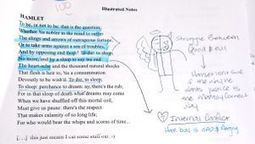In 2015, Minnesota’s Northfield Public Schools had a district-wide gut check. The pre-K-12 district serves 4000 kids, and that year a new state law requiring that all high school juniors take the ACT went into effect. The test results for Northfield were sobering: just under half the juniors failed to meet the ACT’s college-ready reading benchmark score of 22 out of a possible 36.
. . . by the time they finish high school, today’s students read 19% slower than their counterparts of 50 years ago.
“When we dug into the data, we noticed that a sizable percentage of kids were just missing the benchmark—they were one, two, three points below,” says Hope Langston, Northfield’s Director of Assessment Services. The main hurdle? In the reading section, students were struggling to grasp the content and answer the questions all within 35 minutes. “High school teachers told us many kids were having a harder time reading grade level content text,” says Langston. “They simply couldn’t read quickly enough to get through this level of material."
Northfield’s class of 2016, it turns out, reflects a distressing reality in the US: kids are much slower, less efficient readers than they used to be. A recent study sponsored by Reading Plus, an adaptive literacy intervention platform, found that by the time they finish high school, today’s students read 19% slower than their counterparts of 50 years ago.
Research and publish the best content.
Get Started for FREE
Sign up with Facebook Sign up with X
I don't have a Facebook or a X account
Already have an account: Login
Professional learning in a glance (or two)!
Curated by
John Evans
 Your new post is loading... Your new post is loading...
 Your new post is loading... Your new post is loading...

Manuela Velasquez Palomino's curator insight,
August 26, 2020 7:15 PM
Students can take reading to a deeper level through the use of different strategies such as questioning, making connections, and forming interpretations.
By using these cognitive strategies students will be able to understand complex texts and get the most of these. |

Manuela Velasquez Palomino's curator insight,
August 26, 2020 7:15 PM
Students can take reading to a deeper level through the use of different strategies such as questioning, making connections, and forming interpretations.
By using these cognitive strategies students will be able to understand complex texts and get the most of these. |












